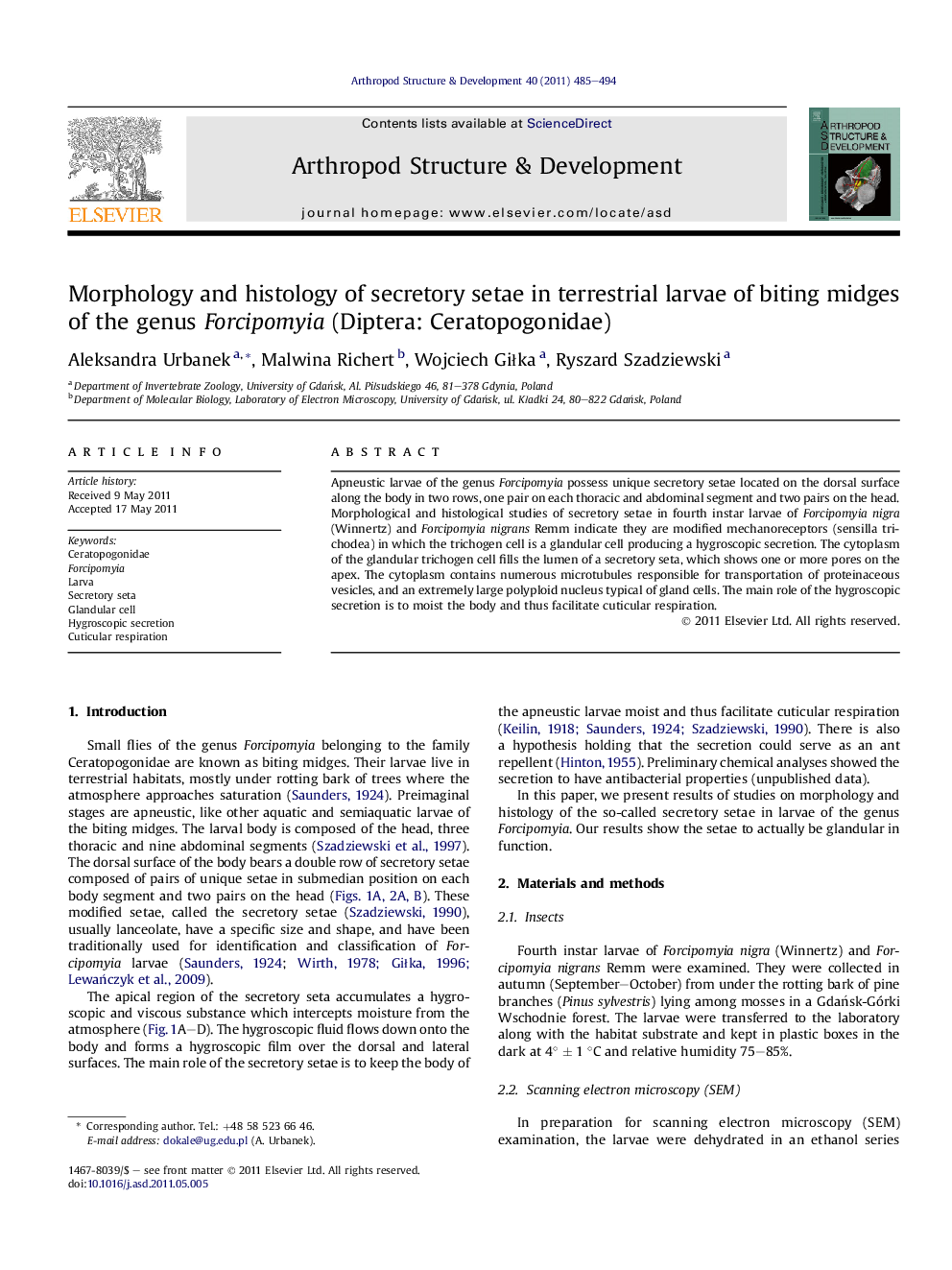| کد مقاله | کد نشریه | سال انتشار | مقاله انگلیسی | نسخه تمام متن |
|---|---|---|---|---|
| 2778756 | 1568098 | 2011 | 10 صفحه PDF | دانلود رایگان |

Apneustic larvae of the genus Forcipomyia possess unique secretory setae located on the dorsal surface along the body in two rows, one pair on each thoracic and abdominal segment and two pairs on the head. Morphological and histological studies of secretory setae in fourth instar larvae of Forcipomyia nigra (Winnertz) and Forcipomyia nigrans Remm indicate they are modified mechanoreceptors (sensilla trichodea) in which the trichogen cell is a glandular cell producing a hygroscopic secretion. The cytoplasm of the glandular trichogen cell fills the lumen of a secretory seta, which shows one or more pores on the apex. The cytoplasm contains numerous microtubules responsible for transportation of proteinaceous vesicles, and an extremely large polyploid nucleus typical of gland cells. The main role of the hygroscopic secretion is to moist the body and thus facilitate cuticular respiration.
Figure optionsDownload as PowerPoint slideHighlights
► Larvae of small Forcipomyia midges possess secretory setae which are located on dorsal body surface.
► They are modified mechanoreceptors producing a hygroscopic secretion.
► Secretion flow out through apical pores of setae.
► Hygroscopic secretion moistens the body and facilitate cuticular respiration.
► Secretion has antibacterial activity.
Journal: Arthropod Structure & Development - Volume 40, Issue 6, November 2011, Pages 485–494